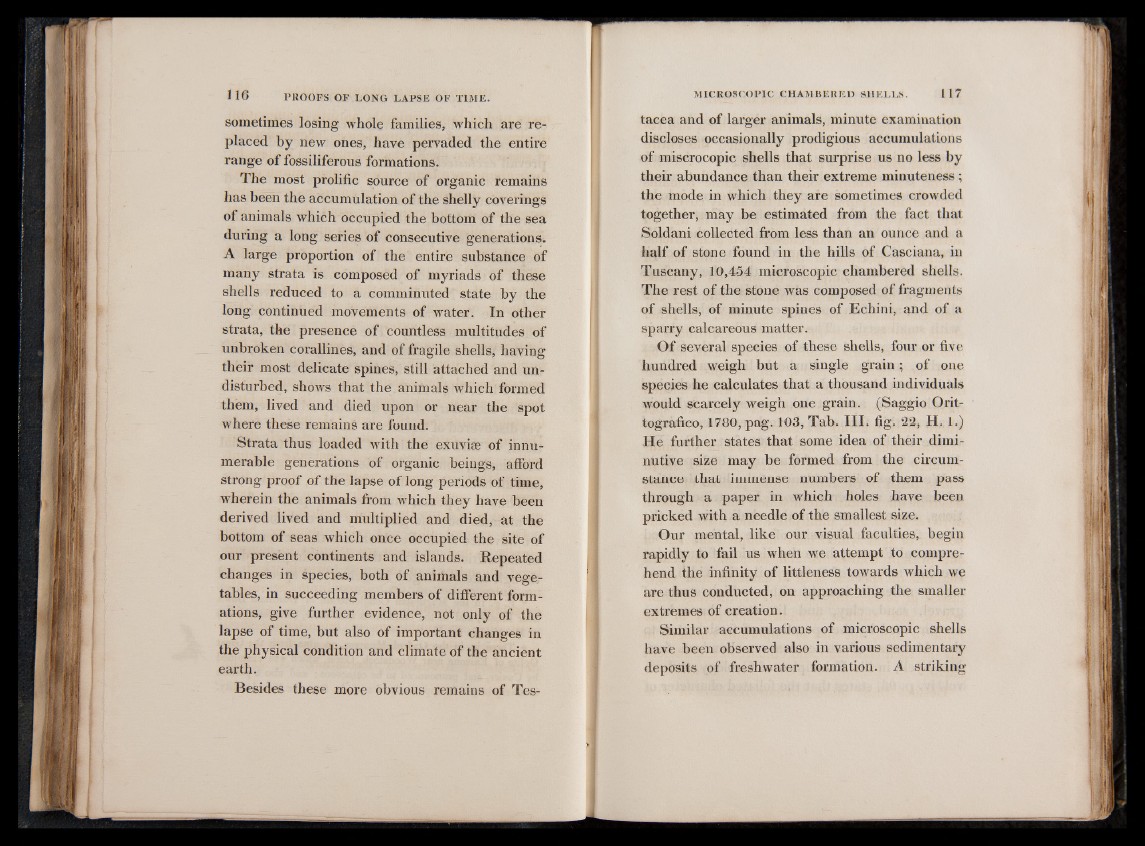
sometimes losing whole families, which are replaced
by new ones, have pervaded the entire
range of fossiliferous formations.
The most prolific source of organic remains
has been the accumulation of the shelly coverings
of animals which occupied the bottom of the sea
during a long series of consecutive generations.
A large proportion of the entire substance of
many strata is composed of myriads of these
shells reduced to a comminuted state by the
long continued movements of water. In other
strata, the presence of countless multitudes of
unbroken corallines, and of fragile shells, having
their most delicate spines, still attached and undisturbed,
shows that the animals which formed
them, lived and died upon or near the spot
where these remains are found.
Strata thus loaded with the exuviae of innumerable
generations of organic beings, afford
strong proof of the lapse of long periods of time,
wherein the animals from which they have been
derived lived and multiplied and died, at the
bottom of seas which once occupied the site of
our present continents and islands. Repeated
changes in species, both of animals and vegetables,
in succeeding members of different formations,
give further evidence, not only of the
lapse of time, but also of important changes in
the physical condition and climate of the ancient
earth.
Besides these more obvious remains of Testacea
and of larger animals, minute examination
discloses occasionally prodigious accumulations
of miscrocopic shells that surprise us no less by
their abundance than their extreme minuteness ;
the mode in which they are sometimes crowded
together, may be estimated from the fact that
Soldani collected from less than an ounce and a
half of stone found in the hills of Casciana, in
Tuscany, 10,454 microscopic chambered shells.
The rest of the stone was composed of fragments
of shells, of minute spines of Echini, and of a
sparry calcareous matter.
Of several species of these shells, four or five
hundred weigh but a single grain; of one
species he calculates that a thousand individuals
would scarcely weigh one grain. (Saggio Orit-
tografico, 1780, pag. 103, Tab. III. fig. 2 2 , H. 1 .)
He further states that some idea of their diminutive
size may be formed from the circumstance
that immense numbers of them pass
through a paper in which holes have been
pricked with a needle of the smallest size.
Our mental, like our visual faculties, begin
rapidly to fail us when we attempt to comprehend
the infinity of littleness towards which we
are thus conducted, on approaching the smaller
extremes of creation.
Similar accumulations of microscopic shells
have been observed also in various sedimentary
deposits of freshwater formation. A striking